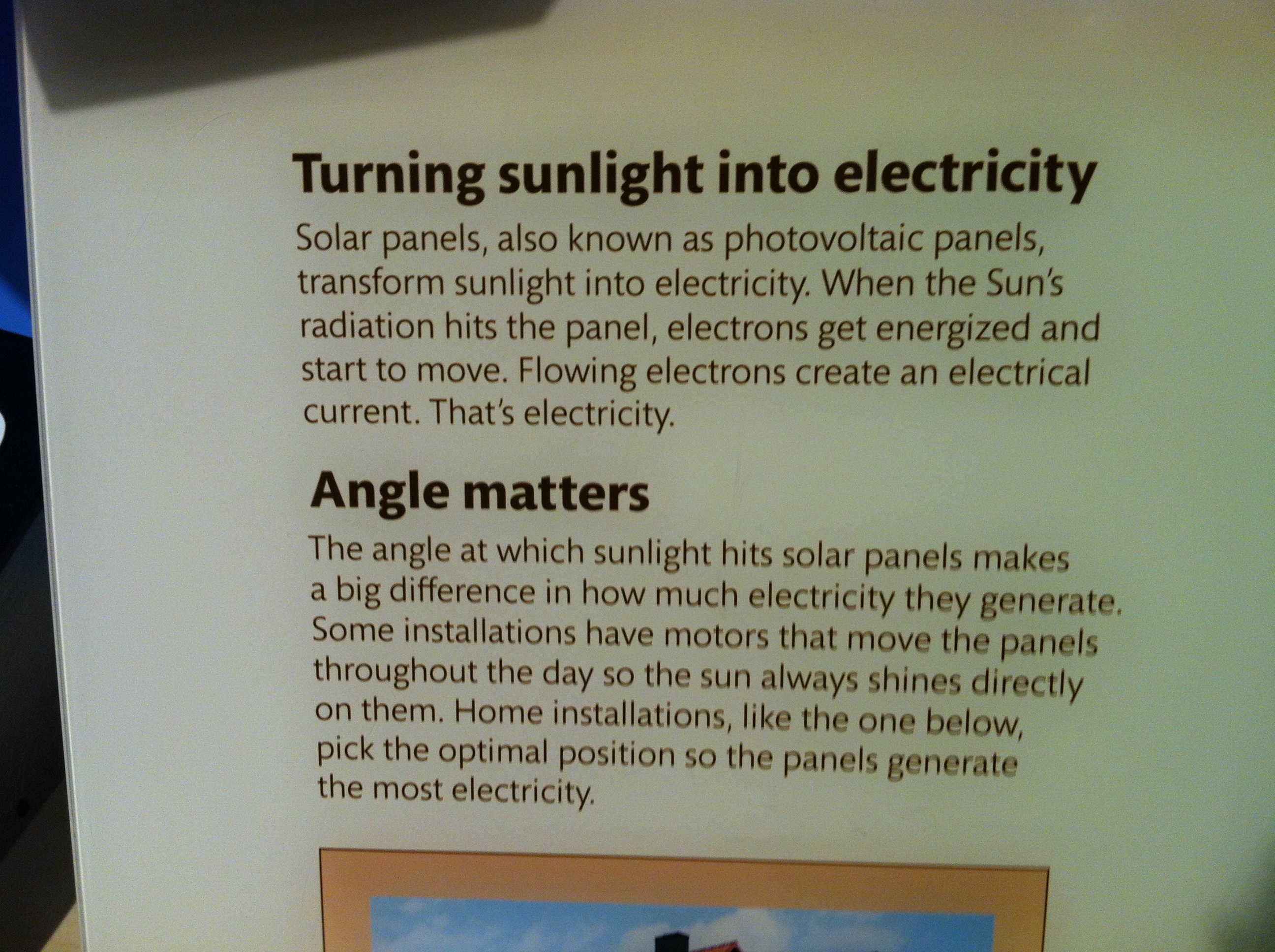During our scheduled trip to the Museum of Science in Cambridge a few weeks back, my group used the opportunity to furthur explore some of the concepts related to our solar oven idea.

Anna V. and myself stumbled our way through a bunch of exhibits before we finally found a relevant section of the museum. On the bottom floor, we found what looked like a fairly new exhibit dedicated to sustainability. This section was good for us to find because our project relates directly to the concepts of sustainability. In particular, our project relates to solar energy. A small nook of the exhibit was dedicated to solar power. We looked at different examples of solar panels and ways to harvest solar energy (one of which was a box-shape quite similar to the oven we had intended to design). After reading a couple articles, pushing a few buttons, and playing with some experiments clearly designed for students much younger than us, we played with a motor that had a solar panel attached to it. There were three lights facing the motor’s panel, and by setting one of the lights on it, the motor would rotate. With more lights, the motor moved proportionally faster. It is a simple principle, but was useful for the means of our experiment. The way we designed the experiment, it would be best for us to use either multiple light sources or a very powerful light source – this will create more heat energy within the oven than just one small light.


The second important thing we learned from the Museum was that the angle of the panel versus the angle of the light source is important. In a simulated experiment, we recorded different power readings based on different “sun” angles and different panel positions. This showed us that the best light is the hours before and after noon, and gave us an idea of how to shape our oven’s reflective panels so as to maximize its heat-harvesting power.
Having finished all this in about 20 or so minutes, Anna and I wandered aimlessly looking at various things that didn’t really have much to do with sustainability, but were interesting nonetheless. We tested the threshold of our senses in one room, played with geometric bubbles in another, learned that we can recognize bird calls without a visual mapping of the sound waves, and walked through a creepy room of taxidermied animals randomly thrown together for no apparent scientific reason. All in all, it was a good time made even better by the fact that we didn’t need to pay for an adult ticket.
Great post, you have pointed out some fantastic points , I likewise think this s a very wonderful website
BluePill UK: sildenafil tablets online order UK – BluePill UK BluePillUk
Kamagra kaufen ohne Rezept – Kamagra Preis Deutschland Kamagra online bestellen